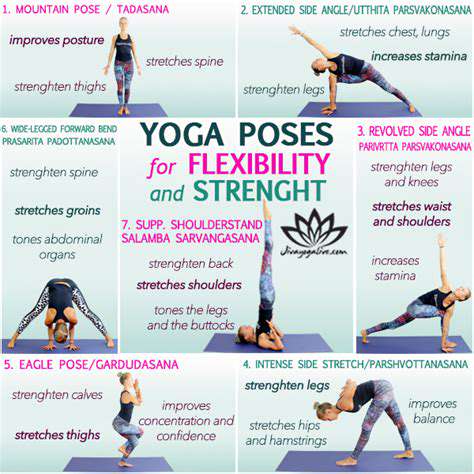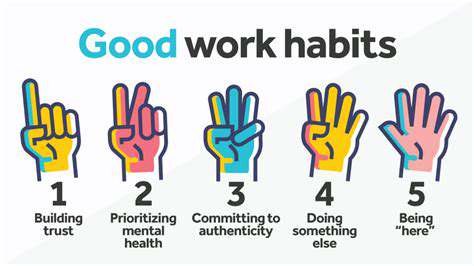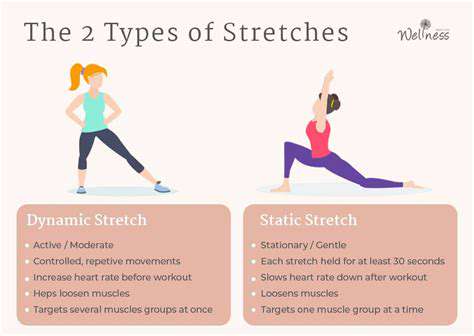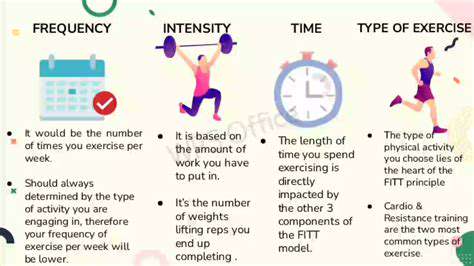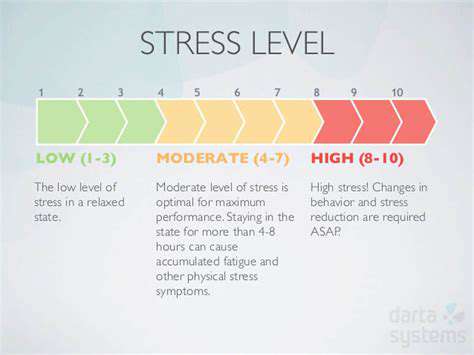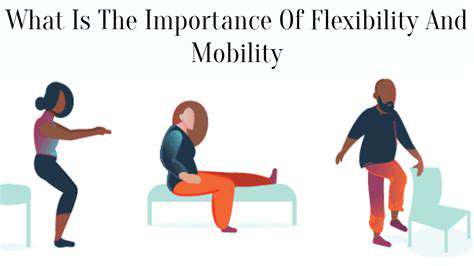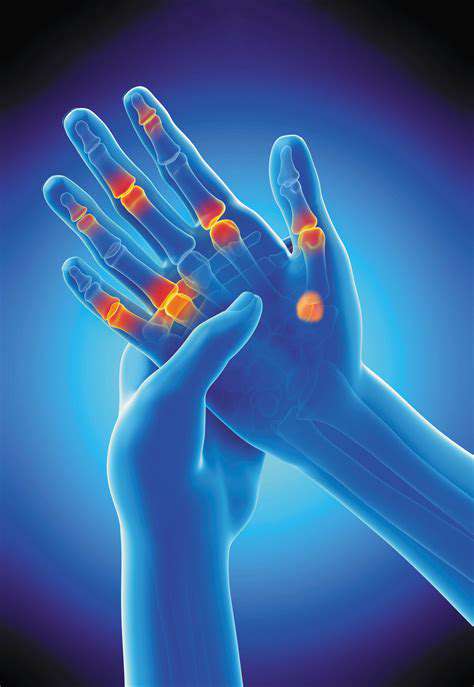Empowering Exercises for Wrist Flexibility
Wrist Flexibility and Sports Performance
In sports, wrist action often makes the difference between good and great performance. Tennis players snap their wrists for powerful serves. Golfers rely on wrist hinge for driving distance. Even swimmers use wrist positioning to cut through water efficiently. Limited wrist mobility doesn't just hurt performance - it increases injury risk dramatically.
Consider baseball pitchers: their wrist flexibility directly affects ball speed and control. The same principle applies to badminton players needing quick wrist flicks for accurate shots.
Wrist Flexibility and Hand-Eye Coordination
Ever wonder why surgeons and artists have such nimble hands? Part of their skill comes from highly developed wrist mobility. Precision work demands wrists that can make micro-adjustments, whether you're painting details or performing delicate surgical procedures.
Pianists provide perfect examples. Their ability to play rapid passages depends on wrists that can move freely while maintaining perfect control. Stiff wrists simply can't achieve the same level of musical expression.
Common Causes of Reduced Wrist Flexibility
Several everyday habits sabotage wrist mobility without us realizing. Typing with wrists bent at odd angles. Sleeping with hands curled under pillows. Even smartphone overuse contributes. Modern life seems designed to stiffen our wrists, between computer work and constant phone scrolling.
Medical conditions like arthritis or past fractures can also limit movement. But often, simple lifestyle changes and regular stretching can restore significant flexibility.
Exercises to Improve Wrist Flexibility
Start gently - forcing stiff wrists to move too far too fast causes more harm than good. Simple circles, front-to-back bends, and side-to-side motions work wonders when done consistently. The key isn't intensity, but regularity. Just five minutes daily makes more difference than one long weekly session.
For best results, combine flexibility work with light strengthening. Stronger muscles support joints better, allowing safer stretching over time.
Maintaining Wrist Flexibility: Long-Term Strategies
Think of wrist care like dental hygiene - small daily efforts prevent big problems later. Set phone reminders to stretch wrists every hour during computer work. Keep light resistance bands in your desk drawer for quick exercise breaks. Prevention always beats treatment when it comes to joint health.
Ergonomic adjustments help too. Proper keyboard height, supportive mouse pads, and posture awareness all contribute to keeping wrists happy for years to come.
Wrist Flexion and Extension Exercises
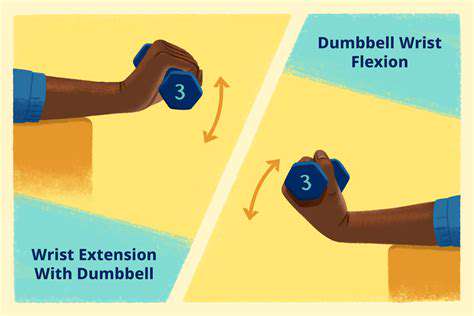
Wrist Flexion Exercises
Bending your wrist downward targets crucial forearm muscles used in countless daily actions. These muscles weaken surprisingly fast when neglected, leading to that frustrating weak grip feeling when opening bottles or carrying groceries. Start with just your body weight before adding resistance.
Here's a simple method: rest your forearm on a table with hand hanging off the edge, palm up. Slowly lower your hand, then raise it back to neutral. Focus on smooth motion rather than speed. Adding a light weight (even a water bottle) increases intensity gradually.
Wrist Extension Exercises
The opposite motion - lifting your hand backward - works equally important muscles. These often get overlooked until pain develops, like the common tennis elbow that actually stems from weak wrist extensors. The exercise mirrors flexion: same position, but palm faces down this time.
Beginners often feel this more intensely at first. That's normal - our modern lifestyles underuse these muscles. Start with just 5-8 repetitions and build up slowly over weeks.
Importance of Proper Form
Never sacrifice form for more reps or heavier weight. A perfectly executed light exercise beats a sloppy heavy one every time. Keep these checkpoints in mind: forearm stays completely still on the surface, only the hand moves; motion stays controlled in both directions; no jerking or momentum.
Common mistakes include letting the elbow drift up or bending fingers instead of moving at the wrist. A mirror helps self-check until the movement feels natural.
Warm-up and Cool-down
Cold muscles resist stretching and tear more easily. Spend two minutes rotating wrists gently in both directions before starting. After working out, hold gentle stretches for 20-30 seconds each. This simple routine cuts injury risk dramatically while improving long-term flexibility gains.
Try this cool-down: extend arm forward, use opposite hand to gently pull fingers back until you feel a pleasant stretch in the forearm. Hold without bouncing. Repeat with fingers pointing downward.
Progression and Variation
Our bodies adapt quickly. What challenged you last month may feel easy now. Progressive overload principles apply to wrists too. Once 15 reps feel comfortable, try adding light resistance - specialized wrist rollers work great, but even a soup can suffices.
Vary hand positions occasionally. Try exercises with fist clenched, or fingers spread wide. Each variation stresses the muscles slightly differently for balanced development.
Safety Precautions
Sharp pain means STOP immediately. Discomfort during new movements is normal, but actual pain signals potential damage. Persistent wrist pain deserves professional evaluation - don't fall for no pain, no gain mentality with joints.
Those with existing conditions like carpal tunnel should consult a physical therapist for customized exercises. Generic routines might aggravate certain issues.
Radial and Ulnar Deviation Exercises

Radial Deviation Exercises
Moving your wrist toward your thumb side strengthens often-neglected muscles. These movements feel unnatural at first because we rarely use full range in daily life. Start seated with forearm supported, letting your hand hang limp. Slowly tilt it upward as if trying to point your thumb toward the ceiling.
Resistance bands work well here. Anchor one end under your foot, hold the other in your hand. The upward pull provides gentle resistance as you perform the movement.
Ulnar Deviation Exercises
The opposite motion - tilting toward the pinky side - proves equally important. This movement is crucial for racquet sports players and anyone who uses tools regularly. Same setup as radial deviation, but now imagine pointing your pinky upward instead.
Many people discover surprising stiffness here. Don't force it - gradual improvement beats aggressive stretching that could inflame tendons.
Importance of Wrist Stability
Strong wrists act like shock absorbers for your hands. Every impact or load gets distributed safely when supporting muscles are conditioned. Think how often you catch falling objects or break falls with your hands - stable wrists prevent sprains in these unexpected moments.
This stability becomes especially crucial as we age. Senior falls often result in wrist fractures that could be prevented with better baseline strength.
Warm-up Routine for Wrist Exercises
Before these specialized movements, prep the area thoroughly. Cold joints resist sideways motion more than front-back movements. Spend extra time here: make stop and go gestures with your hands, then gentle figure-eight motions.
Apply heat for stiff wrists - a warm towel for five minutes dramatically improves mobility. Many therapists recommend doing these exercises after a warm shower when tissues are most pliable.
Progression and Intensity
Side-to-side motions fatigue muscles faster than you'd expect. Start with just 2-3 sets of 5 reps per side, increasing by one rep weekly. The small muscles involved respond better to frequent moderate sessions than occasional intense ones.
Track progress by noting how far you can comfortably deviate over time. Marking a wall with tape helps visualize gradual improvement in range of motion.
Proper Form and Technique
Keep shoulders relaxed and elbow at 90 degrees during these exercises. Any shoulder hunching or elbow movement cheats the targeted muscles. Imagine your forearm is in a cast - only the wrist should move.
Mirror checking helps initially. Better yet, video yourself from the side to spot compensatory movements you might not feel in the moment.
Cool-down and Recovery
After sideways motions, stretch by gently pulling fingers toward each side. These stretches feel particularly satisfying after the workout. Hold each position for 20-30 seconds without bouncing.
Consider contrast therapy for soreness: alternate 30 seconds of ice pack with 2 minutes of warm compress. This pumps fresh blood through the area while controlling inflammation.
Beyond the Exercises: Supporting Your Wrist Health
Understanding Wrist Anatomy
The wrist's complex structure explains why injuries take so long to heal. Eight small bones (carpals) interconnect like puzzle pieces, each contributing to different movements. This intricate design allows amazing versatility but creates multiple potential failure points when overstressed.
For example, the scaphoid bone bears most impact during falls. Its poor blood supply makes fractures here notoriously slow to heal. Understanding these details helps you appreciate why proper conditioning matters.
Identifying Potential Wrist Issues
Early warning signs often get ignored until problems become severe. Tingling at night? Morning stiffness lasting over 30 minutes? These subtle symptoms warrant attention before they escalate. Many conditions respond best when caught early.
Track symptoms in a notebook: when they occur, what relieves them, how long they last. This data helps healthcare providers diagnose issues faster and more accurately.
Importance of Proper Warm-up
Think of wrist tissues like rubber bands. Cold rubber snaps; warmed rubber stretches safely. Just 2-3 minutes of gentle movement increases blood flow and lubricates joints before activity.
For manual workers or athletes, dynamic warm-ups prove most effective. Try writing giant letters in the air with your wrist to prepare for varied movements.
Gradual Progression in Exercise Intensity
Patience pays with wrist conditioning. Adding just 10% more intensity weekly allows safe adaptation. That might mean one extra rep per set, or slightly longer hold times for stretches.
Keep an exercise log to track progress objectively. Our memories often exaggerate improvements - written records keep progression appropriately gradual.
Incorporating Rest and Recovery
Wrist tissues remodel and strengthen during rest periods, not workouts. 48 hours between intense sessions allows proper recovery. Light mobility work on off-days maintains circulation without overtaxing tissues.
Signs you need more recovery: decreased performance, persistent soreness, or unusual stiffness. These indicate your body hasn't fully repaired from previous sessions.
Listening to Your Body's Signals
Distinguish good pain from bad pain. Muscle fatigue feels different from joint pain or nerve irritation. Sharp pains, numbness, or burning sensations all warrant immediate attention.
Develop body awareness by occasionally closing your eyes during gentle movements. Focus on the quality of sensations rather than just completing reps.
The Role of Proper Form
Proper technique protects while building strength. Imagine your wrist bones aligning like stacked blocks - any twisting or misalignment risks uneven wear. Quality repetitions with full attention beat mindless high counts.
Consider occasional professional form checks, just as athletes do. A physical therapist or qualified trainer can spot subtle form issues you might miss.
